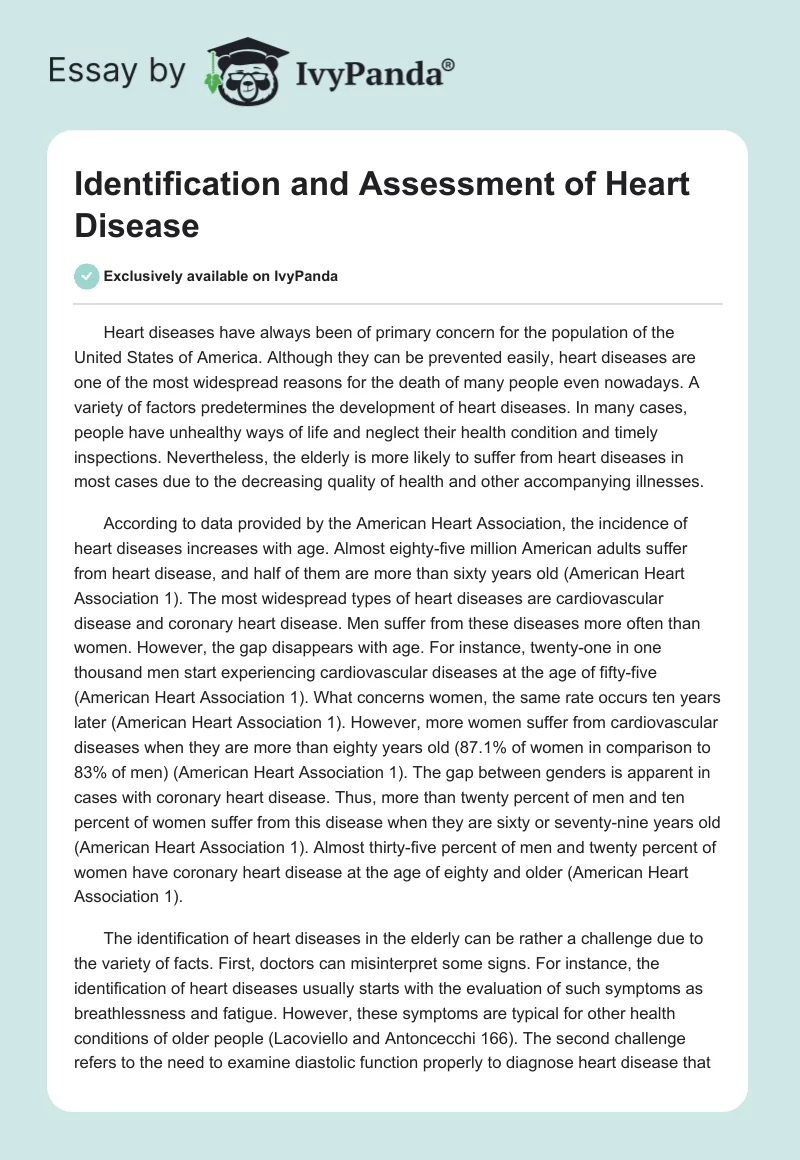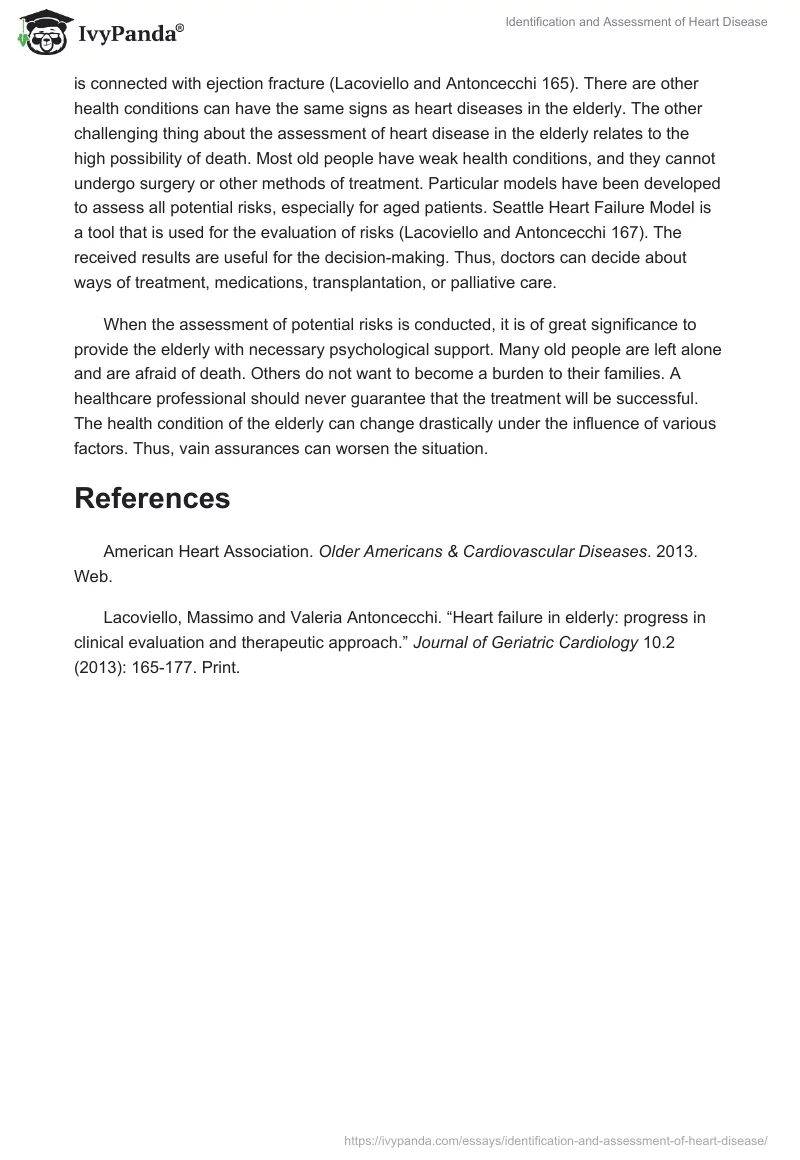Heart diseases have always been of primary concern for the population of the United States of America. Although they can be prevented easily, heart diseases are one of the most widespread reasons for the death of many people even nowadays. A variety of factors predetermines the development of heart diseases. In many cases, people have unhealthy ways of life and neglect their health condition and timely inspections. Nevertheless, the elderly is more likely to suffer from heart diseases in most cases due to the decreasing quality of health and other accompanying illnesses.
According to data provided by the American Heart Association, the incidence of heart diseases increases with age. Almost eighty-five million American adults suffer from heart disease, and half of them are more than sixty years old (American Heart Association 1). The most widespread types of heart diseases are cardiovascular disease and coronary heart disease. Men suffer from these diseases more often than women. However, the gap disappears with age. For instance, twenty-one in one thousand men start experiencing cardiovascular diseases at the age of fifty-five (American Heart Association 1). What concerns women, the same rate occurs ten years later (American Heart Association 1). However, more women suffer from cardiovascular diseases when they are more than eighty years old (87.1% of women in comparison to 83% of men) (American Heart Association 1). The gap between genders is apparent in cases with coronary heart disease. Thus, more than twenty percent of men and ten percent of women suffer from this disease when they are sixty or seventy-nine years old (American Heart Association 1). Almost thirty-five percent of men and twenty percent of women have coronary heart disease at the age of eighty and older (American Heart Association 1).
The identification of heart diseases in the elderly can be rather a challenge due to the variety of facts. First, doctors can misinterpret some signs. For instance, the identification of heart diseases usually starts with the evaluation of such symptoms as breathlessness and fatigue. However, these symptoms are typical for other health conditions of older people (Lacoviello and Antoncecchi 166). The second challenge refers to the need to examine diastolic function properly to diagnose heart disease that is connected with ejection fracture (Lacoviello and Antoncecchi 165). There are other health conditions can have the same signs as heart diseases in the elderly. The other challenging thing about the assessment of heart disease in the elderly relates to the high possibility of death. Most old people have weak health conditions, and they cannot undergo surgery or other methods of treatment. Particular models have been developed to assess all potential risks, especially for aged patients. Seattle Heart Failure Model is a tool that is used for the evaluation of risks (Lacoviello and Antoncecchi 167). The received results are useful for the decision-making. Thus, doctors can decide about ways of treatment, medications, transplantation, or palliative care.
When the assessment of potential risks is conducted, it is of great significance to provide the elderly with necessary psychological support. Many old people are left alone and are afraid of death. Others do not want to become a burden to their families. A healthcare professional should never guarantee that the treatment will be successful. The health condition of the elderly can change drastically under the influence of various factors. Thus, vain assurances can worsen the situation.
References
American Heart Association. Older Americans & Cardiovascular Diseases. 2013. Web.
Lacoviello, Massimo and Valeria Antoncecchi. “Heart failure in elderly: progress in clinical evaluation and therapeutic approach.” Journal of Geriatric Cardiology 10.2 (2013): 165-177. Print.


